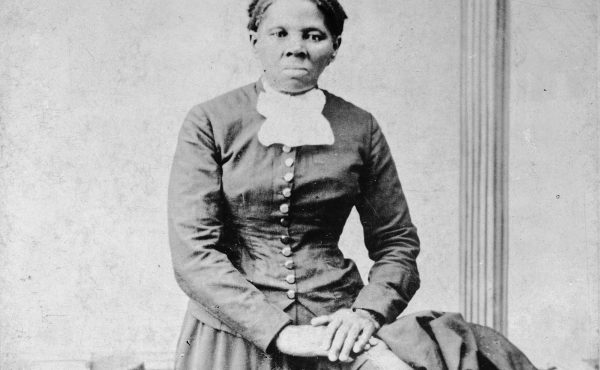By Cheryl Thompson and Francesca D’Amico-Cuthbert
In 1983, Toronto radio personality Ron Nelson introduced local audiences to the program “Fantastic Voyage” — a college radio show hosted on Toronto Metropolitan University’s (formerly Ryerson University’s) 88.1 CKLN FM — which provided hometown and cross-Canada artists (especially those signed to independent labels) with a platform to circulate their hip hop artifacts.
Nelson’s program also shared the airwaves with other college radio stations such as York University’s 105.5 (CHRY-FM) (now VIBE 105.5) and the University of Toronto’s 89.5 (CIUT-FM). Forty years later, the radio landscape in the city is dramatically different.
In 2011, the CRTC decided to revoke CKLN’s license citing “numerous regulatory violations and a lack of quality control.” VIBE and CIUT continue today with shows such as DJ Mel Boogie’s Studio B, and DJ DTS & Matthew Romeo’s Masterplan Show. But as Urban-formatted commercial radio took over the airways, listeners began transitioning away from community radio and it slowly faded into the niche market.
The Urban radio format, which prioritizes Black genres of music such as hip hop, R&B, reggae, soca, and gospel, has always posed a challenge to the Canadian Radio-Television Telecommunications Commission (CRTC)’s content rules, which tightly regulate content and formats during weekly peak radio listenership hours (6:00 am to 6:00 pm).
Commercial radio stations must ensure that 35% of the music they broadcast during these hours is Canadian content. These requirements feel incredibly retrograde in an era when the music industry is global in its orientation, as evidenced by artist-turned music executive Kardinal Offishall’s new appointment as Global A&R at Def Jam, the iconic American hip hop label. And yet, Canadian radio is guarded like a national border; regulators have long decided they get to decide not only what we have access to, as well the conditions that shape that access.
In addition to commercial, campus and community radio, broadcast licenses are granted to ethnic (non-official languages) stations, and Indigenous stations; CBC/Radio Canada; and not-for-profit stations. Similar to Indigenous radio (at 10%) and CBC/Radio Canada (at 20%), campus and community radio are permitted to devote 12% of their programming to “Special Interest Music,” defined by the CRTC as “Concert,” “Folk,” “World beat,” “Jazz and Blues,” “Non-classic religious,” and “Experimental Music.”
By comparison, the CRTC categorizes Popular Music as “Pop, rock, and dance,” “Country,” “Acoustic,” and “Easy Listening.” As well, there are two unique categories within in this format. According to CRTC regulations, stations categorized as one of these must either devote at least 90% or more of its music to songs composed before 1956 (10% must be Canadian), or, in the other category, 90% of the music must consist of selections released before January 1, 1981. In these cases, at least 30% must be Canadian, and played on a weekly basis during peak listenership hours.
Under these regulations there is no specific Black Music classification; instead “1950s R&B,” “Soul,” “Hip Hop,” “Urban,” and “Contemporary R&B” are all placed under the “Pop, rock and dance” category. As a result of what we view as a regulatory bias, over the past 20 years, Black radio (and the infrastructure that sustains Black music in this country) has been challenged and constrained by Canada’s format and content rules.
In 1990, Denham Jolly’s Milestone Radio made its first application for an Urban radio station. It was denied. The CRTC granted a license to Rawlco Communications instead to create a Country station, despite two existing Country stations at the time. When Milestone put forward another bid six years later, the CRTC denied it yet again. This time, the CRTC gave the city’s last commercial high-power FM channel allotment to the CBC.
After eleven years, three applications, 12,000 signatures, and $400,000 in personal funds, the CRTC in 2000 finally approved Milestone’s bid and Canada got its first Black-owned Urban format on the 93.5 FM frequency.
In February, 2001, Flow 93.5 (CFXJ-FM) premiered with a format that represented a significant change in radio — a mix of Black music, oldies and contemporary — but also a strategically placed radio frequency. The 93.5 band was chosen to woo Black listeners away from Buffalo’s Power 93.7 (WBLK-FM), a station that had been, for many, the only source of Black music up until this point.
Ten years after Flow premiered, the void that 93.5 had filled was again emptied following CTV’s acquisition of the station in a $27 million deal which revamped the station to focus almost entirely on contemporary Black music.
As Flow slowly morphed into a Contemporary Pop station, Black community leaders, like the late Fitzroy Gordon, felt that a more Caribbean-focused station with an emphasis on oldies, history, and community conversations was missing in Toronto. Thus, in 2009, after years of work, Gordon was granted a partial license (without a broadcast frequency) to establish a Black and Caribbean commercial station. It would be called CARN 98.7 (CKFG-FM), for Caribbean & African Radio Network.
In 2011, Gordon’s Intercity Broadcasting Network received CRTC approval to use the 98.7 frequency. But again, objection to the station was mounted by the CBC with support from four commercial broadcast groups (Rogers Media, Astral Media, Bell Media, and Durham Radio), which argued that 98.7 would be too close to 99.1 (CBLA-FM). Despite the objections, Gordon’s license was approved. When the station officially launched on October 1, 2011, it signed on as G 98.7. Its first live broadcast, on November 28, 2011, kicked off with Jimmy Cliff’s 1971 reggae classic, “I Can See Clearly Now.”
However, when Gordon died suddenly in 2019, Black community members were forced to clearly see the station’s financial issues. Within a year, G 98.7 was placed into receivership and put up for sale. In October, 2020, Neeti Prakash (Neeti P. Ray), a multicultural broadcaster of South Asian descent, bought G 98.7. As his first appointment, Ray named former iHeartRadio executive Gary Gunter, an American who had spent years working in U.S. Urban radio, as general manager of the station.
Despite public outcry for the station to remain Black-owned and operated, including an online petition with over 10,000 signatures launched by Toronto author Aubrey Clarke, there were no bids submitted for approval by Black-owned groups to buy the station. The new owners offered reassurances that it would continue its cultural mission to represent Toronto’s Black community.
Then, in February, 2022, G joined with Flow to become the new Flow 98.7. Most of the on-air hosts (e.g., Red and Spec) have remained on this new Urban station, but Gunter made several changes that loyal listeners did not see coming. One was the decision to part ways with a long time show, “Mark & Jem in the Morning,” without any farewell or recognition of their time on Flow. Mark (Strong) and Jem (Jemini)’s morning show had run on the station since its inception.
The new Flow also cut nostalgic programming, reduced news content, and shifted to a mostly contemporary hip hop and R&B format. It was a difficult move that the old Flow had also made within three months of its launch, once the station recognized that mixing talk with music meant a loss in valuable revenue and listenership, and made it difficult for the station to fulfill the conditions of its license, as regulated by the CRTC.
When you dig into the numbers, the merger made good business sense. As the largest radio market in the country, as of fall 2021, Toronto claimed an average radio audience of more than 5.87 million people on a daily basis. Commercial radio station Boom 97.3 (CHBM-FM), with over 2.3 million weekly listeners according to the Numeris ratings service, combined with its competitor, CHUM 104.5, to capture five million of the city’s weekly listeners.
By comparison, G in 2019 drew a daily average of 55,000 unique listeners (over age 12) while Flow captured 747,125 weekly listeners. Thus, pooling the listenership together meant G no longer competed for listeners with Flow, and the new station could also better compete in post-prime listenership hours (6:00 pm to 9:00 pm) with CBC’s other radio frequency, 94.1 (CBL-FM) and its R&B-themed “Marvin Room,” hosted by A. Harmony (which airs two days per week), and the daily show, “The Block,” with former Flow host Angeline Tetteh-Wayoe. The latter offers a mix of hip hop, soul, and R&B, both contemporary and oldies.
We get that commercial radio has tight margins. But 20 years after Flow, and over a decade after G, we’re now left with one Urban music station that has Black content but is not Black-owned. In order to meet content rules, it must play music that’s really more about competing for ears during prime listenership hours than keeping alive Gordon’s vision of a network of Black music — popular and special interest — that spans decades, geographies of space and place, and even into talk radio.
When Mark and Jem’s morning show resurfaced on the not-for-profit 106.5 Elmnt FM (CFPT-FM) in January, 2022, we, like many, turned our dials to this new station, owned by First Peoples Radio, a subsidiary of the Aboriginal Peoples Television Network (APTN). Because it is not wholly commercial radio, Elmnt plays a mix of popular music and special interest, and has a mandate that at least 25% of the music played by the station is by Indigenous Canadian musicians. By the end of 2022, however, the duo (and others) were laid off to keep the station afloat. In an Instagram post, they bid adieu to their decades-long presence on Toronto’s airwaves.
These patterns pose a question: if community radio is not structured to prioritize Black music, and Toronto’s commercial radio is dominated by media goliaths, what will become of Black music — old and new — on the radio if the new Flow doesn’t make it?
In his 1985 hit, “I Can’t Live Without My Radio,” rapper LL Cool J immortalized the Boombox, a large portal radio that blasted Black music within a limited geographic space. Today, Black music has no limits. Its sonic influences are boundless and exist everywhere and anywhere there are Black people. Many would also agree that Black music today, and for a long time, has driven the pulse of the market and the direction of much of the popular music the public consumes. And yet, in Canada, the CRTC does not prioritize Black music in its broadcasting vision.
For too long, Black music has been stifled by the CRTC’s regulations. This history of Black music in Canadian radio reveals that if the Urban radio format is to survive, the regulators need not overlook the nuances of genre, race, and locality, and truly practice their mission and mandate of ensuring access to compelling creative content, reflecting the nation’s diversity, and protecting the interests of all Canadians.
Cheryl Thompson is an Associate Professor in Performance at The Creative School, Toronto Metropolitan University. Her latest book Uncle: Race, Nostalgia and the Politics of Loyalty was published in 2021. Follow Cheryl on twitter at @DrCherylT.
Francesca D’Amico-Cuthbert is a Post-doctoral Fellow at the Language Research Center at the University of Calgary. She also serves as a researcher on the education committees for the Universal Hip Hop Museum and the Hip Hop Education Center think tank. Follow Francesca on twitter at @hiphopscholar82.





One comment
What about Ingenious Music?